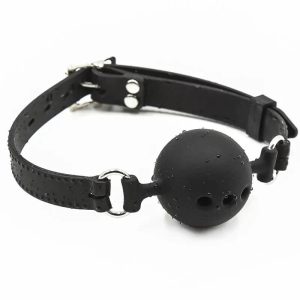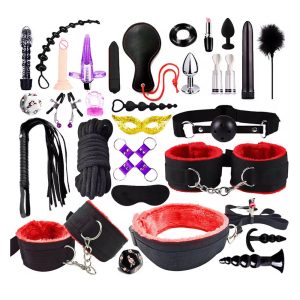BDSM
Explore the thrilling world of dominance and submission with our curated collection of Adult BDSM Sex Toys. Designed for safe and consensual play, our products invite you to discover new dimensions of intimacy and pleasure.

Showing 1–12 of 38 resultsSorted by popularity
-
Price range: $10.95 through $11.95
-
Price range: $7.95 through $8.95
-
Price range: $3.95 through $24.95
-
Price range: $3.95 through $4.95
-
Price range: $8.95 through $9.95
-
Original price was: $12.95.$6.95Current price is: $6.95.
-
Price range: $14.95 through $47.95
Showing 1–12 of 38 resultsSorted by popularity
What is a rigger BDSM?
In the context of BDSM (Bondage, Discipline/Dominance, Sadism, Masochism), a “Rigger” refers to an individual who specializes in the art of rope bondage. A Rigger is skilled in using ropes to bind and restrain a partner in a way that is both aesthetically pleasing and safe. This practice often involves complex patterns and knots that can create intricate designs on the body, sometimes referred to as “shibari” or “kinbaku,” which originate from Japanese rope bondage traditions.
Riggers pay close attention to the physical and emotional well-being of their partners, ensuring that the ropes are applied in a manner that does not cause unnecessary pain or damage. Communication and consent are crucial in this type of BDSM play, as the Rigger and the person being bound must establish clear boundaries and signals for when the activity should stop.
The role of a Rigger goes beyond mere bondage; it often includes an artistic and meditative aspect, where the act of tying and the reactions of the partner can lead to a profound and intimate connection.
Why do people like bdsm?
- Power Exchange: Exploring dynamics of dominance and submission.
- Intimacy and Trust: Deepening connections through shared experiences.
- Fantasy Fulfillment: Acting out scenarios in a safe environment.
- Endorphin Release: Experiencing euphoria from physical activities.
- Improved Communication: Enhancing negotiation and boundary-setting skills.
- Psychological Benefits: Stress relief, empowerment, and self-esteem boosts.
- Artistic Expression: Appreciation for aesthetics in practices like shibari.
- Healing: Cathartic processing of emotions or past experiences.
What is bondage gear?
Bondage gear refers to a variety of equipment and accessories used in BDSM practices, specifically for the purpose of restraining or restricting the movement of a partner. These items are often used in role-playing scenarios involving power exchange, where one individual assumes a dominant role and the other takes on a submissive role.
Here are some common examples of bondage gear:
- Handcuffs and Restraints: Metal or leather cuffs used to bind wrists or ankles.
- Rope and Cord: Often used in the art of shibari (Japanese rope bondage) for intricate body ties.
- Collars and Leashes: Collars may be symbolic or functional, and leashes can be attached for leading or control.
- Spreaders and Barriers: Devices that keep limbs apart, such as spreader bars for legs or arm restraints.
- Blindfolds and Gags: Used to restrict sight and sound, enhancing sensory deprivation.
- Harnesses and Slings: Support structures for various positions during play.
- Benches and Crosses: Furniture like St. Andrew’s crosses or bondage benches for positioning and immobilization.
- Sensory Deprivation Masks: Masks that cover the head, blocking out light and sometimes sound.
- Chains and Locks: Used for securing restraints or adding weight to the bondage experience.
- Paddles and Whips: Impact play tools that can also serve as a form of restraint when used in certain ways.
Safety is paramount in the use of bondage gear, and it’s important to ensure that all activities are consensual, incorporate safe words or signals, and are performed with awareness of potential risks to prevent injury. Proper training and education are recommended for the use of more complex or potentially dangerous gear.











